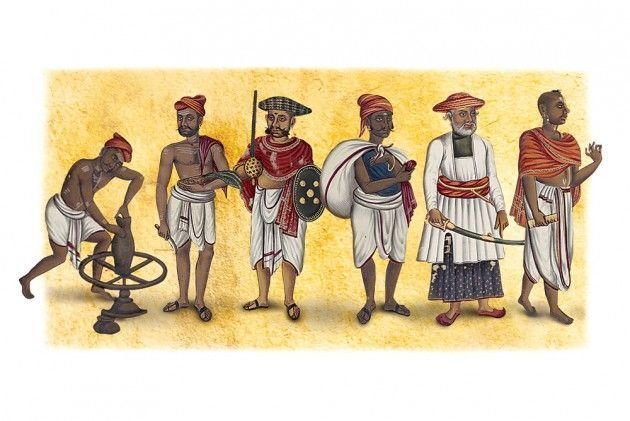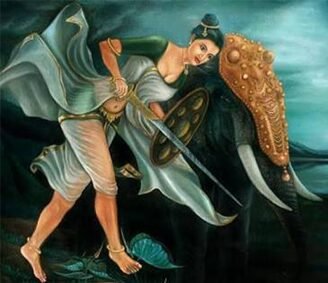Caste System: From Ancient Social Structure to Modern Challenges

The caste system has often been described as a cornerstone of Indian society, woven into the very fabric of its history, culture, and identity. From its ancient origins to its complex manifestations in modern India, caste has shaped not only how people live but also how they perceive their place in the world. It has been a system of both oppression and protection, identity and division. Despite years of reform, its shadows stretch across the country today, in ways that are both seen and unseen. This article seeks to unravel the story of the caste system — its origins, its evolution, and its persistent influence on modern-day India.
The Origins of the Caste System: A Functional Social Order?
The story of the caste system is often linked to the Vedic texts of ancient India, particularly the Rigveda, where society was divided into four primary categories: Brahmins (priests and teachers), Kshatriyas (warriors and rulers), Vaishyas (merchants and farmers), and Shudras (laborers and service providers). These divisions were not as rigid as they later became; rather, they were more functional — meant to categorize people based on their duties, not their birth.
It’s essential to consider that in early Hindu texts, these varnas (categories) were likely not intended to be hereditary. Rather, they were based on qualities and duties (guna and karma). As society became more complex, these roles became intertwined with the idea of purity and pollution, which eventually led to a far more rigid system where birth determined one’s place in the social hierarchy.
The creation of sub-castes, or jatis, over time further complicated the system. Rather than fluid categories, jatis solidified the divisions into fixed, hereditary groups. This evolution from a fluid social organization to a rigid caste system wasn’t a smooth one — it was shaped by religious, political, and economic forces, transforming it into a tool for social control. What began as a method to manage a growing society soon became a deep, irreversible division.
Medieval and Colonial Periods: Reinforcing and Institutionalizing Caste
During the medieval period, the caste system became even more entrenched. Under various regional kingdoms, as well as the Muslim rulers who arrived in India, caste continued to define social roles. Yet, rather than dismantling the caste system, these rulers often reinforced it. The rigid hierarchical structures suited the needs of both the elite classes and the ruling authorities who depended on clear divisions to maintain control over their subjects.
In rural areas, the caste system had deep ramifications. Untouchability, the practice of ostracizing certain groups from society, was institutionalized in certain regions, relegating the lowest castes (the Dalits) to perform the most degrading tasks, such as cleaning latrines or handling dead animals. This created an unbearable and dehumanizing reality for millions.
However, it was during the British colonial period that caste began to be formally codified. The British administration, in their quest for efficient governance, implemented surveys and censuses that mapped out the social fabric of India in ways that had never been done before. The census, for example, categorized people into rigid caste categories, which reinforced the existing hierarchy rather than undermining it.
More importantly, British colonialists’ policies contributed to the creation of economic divisions, where some castes were favored for specific tasks, while others were deliberately kept in a state of perpetual poverty. The industrial era, which the British ushered in, didn’t help this matter — factory jobs and modern employment were largely inaccessible to lower castes.
Post-Independence India: Constitution, Affirmative Action, and Persistent Struggles
When India gained independence in 1947, one of the most important challenges was to dismantle the caste system’s entrenched hold on society. Leaders like Jawaharlal Nehru and Dr. B.R. Ambedkar worked toward creating a new, inclusive vision of India, one that would guarantee social justice to every citizen, regardless of their caste.
The Indian Constitution, adopted in 1950, abolished untouchability and enshrined equality before the law. Dr. Ambedkar, himself a Dalit, fought for provisions that would allow for the upliftment of those from historically marginalized communities, particularly through affirmative action (reservation) policies. These policies created a path for Dalits, Other Backward Classes (OBCs), and Scheduled Tribes (STs) to access education, jobs, and political power — opportunities that had long been denied to them.
However, the road to equality was never easy. The legal provisions were one thing, but changing centuries-old attitudes was another. In rural India, where caste-based discrimination was (and still is) a deeply ingrained part of life, constitutional reforms often had little immediate effect. Dalits continued to face violent oppression, especially in the form of caste-based violence and systemic discrimination in areas such as employment, education, and healthcare.
Political representation also remained largely skewed. Even today, caste-based politics plays a significant role in elections, with political parties appealing to caste groups for support. While this has allowed some marginalized communities to gain political power, it has also fostered divisive politics, keeping caste identities alive.
Caste in the 21st Century: Complex Realities and Persistent Inequality
In modern India, the caste system exists in both overt and subtle forms. Though caste-based discrimination is officially illegal, it remains pervasive in many parts of the country. This is particularly true in rural areas, where caste divisions continue to affect every aspect of life — from marriage and social gatherings to access to resources and basic amenities.
In urban areas, the situation is more complex. Economic progress has led to a certain amount of social mobility, especially among the middle classes. However, caste continues to define professional networks, and even educated professionals face discrimination based on their caste. One cannot ignore the caste biases that exist in hiring practices, where job candidates from lower castes often face subtle discrimination.
The government’s reservation system, while an essential tool for addressing caste-based inequities, has also been a subject of debate. Critics argue that reservation policies, though well-intentioned, have led to reverse discrimination, while proponents argue that such policies are necessary to level the playing field. In practice, many argue that the reservation system, which was designed to help Dalits and OBCs gain access to education and employment, often benefits the already affluent sections of these communities, leaving the poorest in perpetual poverty.
Furthermore, caste-based violence remains an alarming issue. From atrocities against Dalits to attacks on those who defy caste norms, violence continues to be a dark stain on India’s reputation. Even though laws exist to protect Dalits, they are often not implemented effectively, and perpetrators of violence frequently go unpunished.
Social Movements and Cultural Resistance
The fight against caste oppression has been led by a number of reformers and social movements, both historically and in contemporary times. Figures like Dr. Ambedkar, who led the Dalit community’s struggle for equality, and other social reformers such as Jyotirao Phule, Periyar, and Narayan Guru, have been instrumental in challenging the caste system’s legitimacy.
In recent years, Dalit rights movements and social media have become powerful platforms for raising awareness and fostering activism. The rise of Dalit literature and art, along with growing political consciousness, has contributed to a redefinition of caste identities. Movements like the Dalit Panther Movement in the 1970s and contemporary Dalit activist groups continue to challenge social norms and push for greater political and social inclusion.
The Road Ahead: Creating an Inclusive Society
The question of caste in India is not one that can be answered simply with laws and policies. It requires a cultural shift — a deep transformation in how individuals and communities view each other. Education remains one of the most crucial factors in this transformation. The younger generation, who are exposed to progressive ideas and global cultures, are more likely to reject caste-based discrimination and embrace a more egalitarian approach to society.
It is also essential for India to continue to invest in robust, inclusive policies that address not just the symptoms of caste inequality, but the root causes. This means providing quality education, ensuring that affirmative action policies reach the most marginalized, and ensuring that every citizen, regardless of caste, has access to basic rights and opportunities.
Ultimately, the battle against caste is a long-term one. India’s path to equality may be fraught with challenges, but the country’s continued focus on justice, social mobility, and inclusion will hopefully lead to a future where caste is no longer a dividing force, but a part of history.


